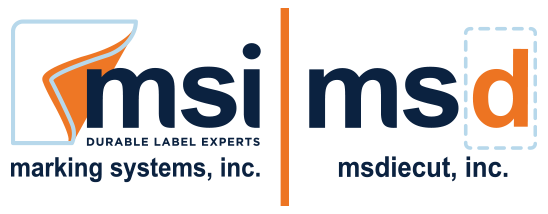CASE STUDY:
How MSI Helped an Aerospace Company With Dead Front Overlays

Custom overlay manufacturing is one of the main parts of our business. A dead front overlay involves an icon or feature that is hidden from view until an LED light illuminates it. When the light source is on, the hidden graphics are revealed. When off, the graphics are hidden, or “dead.” This allows you to illuminate only the graphics or symbols in use at the time. Your car dashboard is probably the most common application for dead front overlays. The main concept is to only illuminate the graphics or symbols you want the customer to see at any one time. For instance, you only see the seat-belt indicator light if you are not wearing your seat belt. In contrast to the static graphic options of the past, dead front overlays give the benefit of a less cluttered look to your overlay. One of the most critical elements of this type of overlay is the color of your graphic, icon or text. If it’s a warning symbol, you want people to notice it, pronto. Which color is best for that? That was the challenge for one of our aerospace customers. Here’s how we solved it.
Challenge
Our customer needed a dead front overlay for their control panel. As with all dead fronts, the text would be hidden from view until an LED light illuminated it. The challenge was: Our customer didn’t know what their LED colors would be. They were deciding between white or RGB (Red Green Blue). White is more intense and bright than the RGB, so the customer needed to determine which dead front label to apply to the panel.How We Solved It
In order to help our customer decide which LED color to go with, we offered them a rapid prototype with three different solutions.
- Regular dead front: For this option, we subsurface printed a layer of transparent black ink over the entire label. After that, we add an opaque black, sometimes called a “light blocker,” everywhere except the text. This helps ensure the light does not bleed.
How it turned out: When the text is lit, it is slightly grayish in color. - Dead front + a pass of white: For option #2, we subsurface printed transparent black ink over the entire label, subsurface printed the opaque black everywhere but the text, and then subsurface printed a pass of white all over the label.
How this turned out: Adding the pass of white improved the appearance of the text to a brighter white. - Dead front + selective colors: With this option, we added selective colors (Red Green & Blue) to maintain the functionality of RGB LEDs should they decide to go with White LEDs.
Results
After testing all three solutions on their panel, the customer decided to go with option number 3. Being able to use a dead front with selective colors, they were able to use the White LEDs, which is a stocked item, less expensive than RGB LEDs and brighter in intensity.
How We Solved It
In order to help our customer decide which LED color to go with, we offered them a rapid prototype with three different solutions.
- Regular dead front: For this option, we subsurface printed a layer of transparent black ink over the entire label. After that, we add an opaque black, sometimes called a “light blocker,” everywhere except the text. This helps ensure the light does not bleed.
How it turned out: When the text is lit, it is slightly grayish in color. - Dead front + a pass of white: For option #2, we subsurface printed transparent black ink over the entire label, subsurface printed the opaque black everywhere but the text, and then subsurface printed a pass of white all over the label.
How this turned out: Adding the pass of white improved the appearance of the text to a brighter white. - Dead front + selective colors: With this option, we added selective colors (Red Green & Blue) to maintain the functionality of RGB LEDs should they decide to go with White LEDs.
Results
After testing all three solutions on their panel, the customer decided to go with option number 3. Being able to use a dead front with selective colors, they were able to use the White LEDs, which is a stocked item, less expensive than RGB LEDs and brighter in intensity.
Our How MSI Helped an Aerospace Company With Dead Front Overlays at MSI provide a clean, professional look that is made to last.
Interested? Intrigued? We can rapid prototype a model for you. Get started with your prototype by contacting us at MSI.
We’d love TO HELP YOU GET STARTED.
